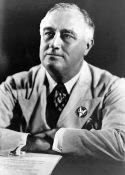Thanks to Paul Karoff for sending the following:
Paul Karoff
American Academy of Arts and Sciences
136 Irving Street
Cambridge, MA 02138
www.amacad.org
Humanities Enjoy Strong Student Demand but Declining Conditions for Faculty
New Data Available on College and University Humanities Departments
CAMBRIDGE, MA – The humanities continue to play a core role in higher education and student interest is strong, but to meet the demand, four-year colleges and universities are increasingly relying on a part-time, untenured workforce.
Those are among the findings from the Humanities Departmental Survey, conducted by the American Academy of Arts and Sciences and a consortium of disciplinary associations. The survey includes data collected from English, foreign language, history, history of science, art history, linguistics, and religion departments at approximately 1,400 colleges and universities. It is the first comprehensive survey to provide general cross-disciplinary data on humanities departments.
The results are available on the Academy’s Humanities Resource Center Online at www.HumanitiesIndicators.org.
According to the Humanities Departmental Survey:
- Across the humanities, but especially in English and combined English/foreign language departments, the professoriate at four-year colleges and universities is evolving into a part-time workforce. During the 2006–2007 academic year, only 38 percent of faculty members in these departments were tenured. English departments had the greatest proportion of non-tenure-track faculty (49 percent).
- When minors are included, undergraduate participation in humanities programs is about 82 percent greater than counting majors alone would suggest. For the 2006-2007 academic year, 122,100 students completed bachelor’s degrees and 100,310 completed minor degrees in the three largest humanities disciplines—English, foreign languages, and history.
- Reflecting the demands of a global economy, student interest in foreign language is strong – during the 2006–2007 academic year, foreign language departments awarded 28,710 baccalaureate degrees and had the largest number of students completing minors (51,670). Yet investment in a stable professoriate to teach and study foreign languages and literatures appears to be declining, with a significant reduction in recruitment of full-time faculty members (39 percent fewer recruitments for full-time positions in 2008-2009 than hires for 2007-2008) and fewer total graduate students than faculty members, the only surveyed discipline for which this was the case.
- Turnover rates among humanities faculty were low (only 2.5 percent of humanities faculty left the profession through departure, retirement, or death during the two academic years preceding the survey). Combined with recently instituted hiring freezes on many campuses, career opportunities for the next generation of scholars (there were approximately 84,000 graduate students in the surveyed fields during the 2006–2007 academic year) are limited.
- Approximately 87 percent of humanities departments reported that their subject was part of the core distribution requirements at their institution.
The survey results provide a snapshot of U.S. humanities departments at the end of the first decade of the 21st century. The survey covers a broad range of topics, including numbers of departments and faculty members, faculty distributions by discipline, courses taught, tenure activity, undergraduate majors and minors, and graduate students. The data provide new information about each of the disciplines; they also allow comparisons across disciplines. These data are especially important because the U.S. Department of Education has indefinitely suspended the only nationally representative survey providing information about humanities faculty (the National Study of Postsecondary Faculty).
Several national disciplinary societies collaborated with the Academy to develop, field, and interpret data gathered by the Humanities Departmental Survey: the American Academy of Religion; American Historical Association; College Art Association; History of Science Society; Linguistic Society of America; and the Modern Language Association. The American Council of Learned Societies and the American Political Science Association also provided important assistance. The survey was administered by the Statistical Research Center of the American Institute of Physics, which also performed the basic data analysis.
Even though the humanities disciplines represent an essential core of the liberal arts curriculum, they have long been data deprived. The empirical data now available in the survey, along with the rich collection of information already found in the Humanities Indicators, begin to fill that gap and to establish baselines that will allow stakeholders to track trends in the future. The Academy hopes that the Humanities Departmental Survey can be expanded to include additional disciplines and updated regularly, producing trend data that could be incorporated into the Humanities Indicators.
The Humanities Indicators include data covering humanities education from primary school through the graduate level; the humanities workforce; humanities funding and research; and the humanities in civic life. Modeled after the National Science Board’s Science and Engineering Indicators, the Humanities Indicators serve as a resource to help scholars, policymakers, and the public assess the current state of the humanities. Launched in January 2009, the Academy continues to update and expand the Humanities Indicators.
Those who wish to receive announcements of new data and research on the humanities can subscribe to an email alert system at www.HumanitiesIndicators.org.
NOTE: Please use the following citation for data contained in the Humanities Indicators: “American Academy of Arts and Sciences, Humanities Indicators, http://www.HumanitiesIndicators.org”






















